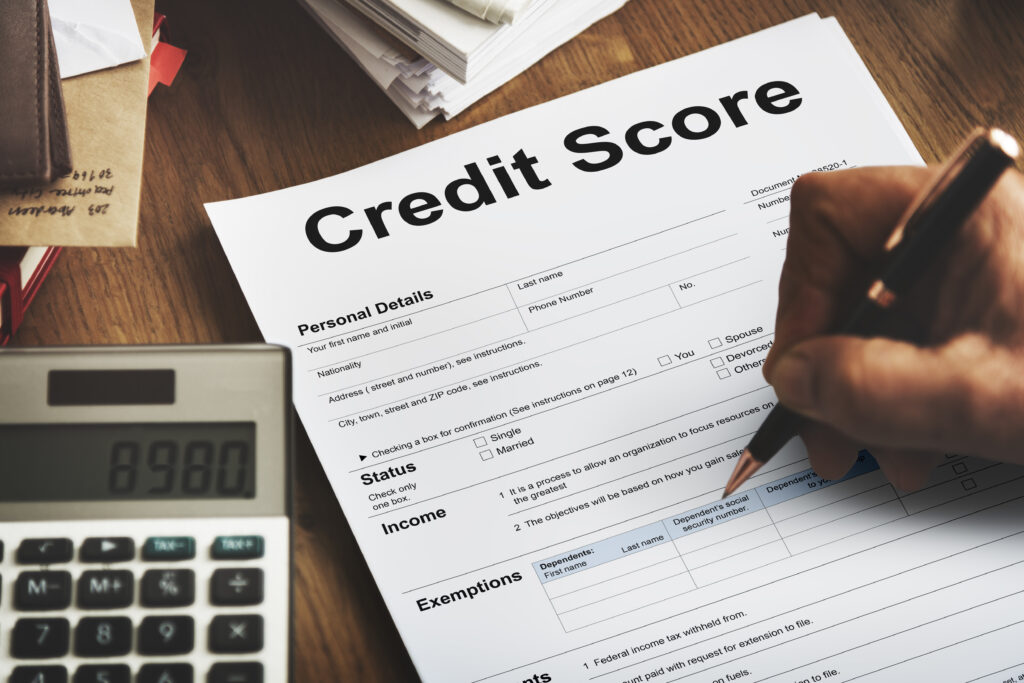How to Qualify for a Loan: Step-by-Step Guide to Qualifying with Confidence
Imagine finding yourself in a financial bind—perhaps you’re dealing with an unexpected medical bill or want to make a large purchase that you can’t cover with your savings. Loans can offer a viable solution, but qualifying for a loan can feel overwhelming, leaving you anxious and unsure about how to proceed.
This stress can prevent you from taking the first step, leaving you stuck in a cycle of financial uncertainty. Even worse, starting the process without understanding it may lead to unsuccessful applications or suboptimal loan terms that exacerbate your financial situation. The stakes are high and the process complex, making it crucial to arm yourself with the right information.
That’s where this comprehensive guide comes in. Whether you’re a first-timer or someone who’s been through the loan application process before, this article aims to empower you.
We will walk you through every step of how to qualify for a personal loan, detailing key factors that influence your loan eligibility and even common mistakes to avoid. Equipped with actionable insights, you’ll be well-positioned to confidently navigate the loan application process, ultimately gaining control over your financial destiny.
You may also like: What Is a Personal Loan? A Comprehensive Guide to Understanding Personal Financing
A Closer Look at Personal Loans
Personal loans offer a flexible financial solution for various needs. Whether you’re managing a financial emergency or planning a big purchase, understanding the ins and outs of personal loans can be beneficial.
Your financial situation will determine the type of loan best suited for you. According to a recent study, the total debt for all American households hit a record high of $16.9 trillion in 2022 on different types of loans, highlighting the importance of understanding your options.
In this section, let’s examine the factors that affect the type of personal loan you can get.
Types of Personal Loans
With personal loans, you generally have two primary options: secured and unsecured loans. Here are ways the two types differ:
- Unsecured Personal Loan: These loans don’t require collateral but do require a good credit score and credit history. Usually has higher interest rates to compensate for the lender’s increased risk.
- Secured Personal Loan: These require collateral like a home or car, offering potentially lower interest rates. Poses a considerable risk of asset loss if you default.
Your debt-to-income ratio is a key factor most lenders consider, as it indicates your ability to manage monthly payments. A high ratio can adversely affect your loan application, potentially requiring a down payment to offset the risk.
Credit and Eligibility
Your credit report is vital in the loan application process. A higher credit score generally yields better loan terms, while a low credit score may necessitate a secured loan or a higher interest rate.
Financial Prerequisites
Before you apply, gather documents that prove your financial responsibility. This often includes pay stubs, bank statements, and tax returns for verifying your income. Knowing your credit score and understanding your debt-to-income ratio can guide you in choosing the best personal loan for your financial situation.
Paying close attention to these elements can help you better prepare yourself to meet the lenders’ requirements, enhancing your likelihood of approval.
You may also like: Your All-In-One Guide to Navigating Mortgage Loans
Understanding Key Factors Before Loan Application
Before you jump into the personal loan application process, it’s crucial to understand various factors that most lenders consider. Doing so improves your personal loan eligibility requirements and helps you secure competitive rates.
Credit Score and Credit History
Your credit score is the numeric representation of your financial responsibility. Lenders check it closely, along with your credit history. Generally, a higher credit score can earn you lower interest rates. However, even a low credit score doesn’t necessarily exclude you from securing a loan.
Here’s what you need to to know:
- Credit Score: Aiming for a credit score above 700 opens doors to excellent credit offers, lower interest rates, and better terms. However, even with a low credit score, options exist such as secured personal loans, which usually require some form of collateral like a car or a home.
- Credit History: Beyond just the score, most lenders will scrutinize your payment history. This includes credit card payments, student loan payments, and even mortgage payments. Any late or missed payments can adversely affect your credit report, making it difficult to qualify for a loan.
Debt-to-Income Ratio and Monthly Income
Understanding your debt to income ratio and your monthly income can help you better strategize your loan application.
- Debt-to-Income (DTI) Ratio: A lower DTI ratio often works in your favor as it signifies lesser financial risk to the lenders. It takes into account all your monthly debt payments and compares them to your gross monthly income. Maintaining a low ratio could potentially get you a higher loan amount.
- Monthly Income: Your monthly income provides assurance to the lender of your repayment capability. The gross monthly income is usually what’s considered, and lenders may ask for pay stubs and bank statements for verifying your income.
Loan Amount and Terms
Deciding the total loan amount and terms in advance is crucial for maintaining a balanced monthly budget. Loan amounts generally range based on your loan type and your financial situation.
- Loan Types: Secured personal loans often offer more considerable sums than unsecured ones, albeit with the risk of losing your collateral. Understanding different loans will allow you to make an educated decision that best fits your financial situation.
- Your Financial Situation: Take into account your monthly payments, outstanding debts, and financial emergency reserves before deciding on a loan amount.
Documents and Application Process
The personal loan application generally requires a variety of personal documents, including tax returns and a driver’s license. Online lenders have streamlined this process, but traditional lenders require thorough documentation:
- Loan Application: This generally involves checks on your credit report, scrutiny of your income requirements, and possibly origination fees. Each lender’s process varies slightly.
- Closing Costs: Some lenders add closing costs to the loan, which can increase your overall financial responsibility. Always read the terms carefully.
Interest Rate and Other Fees
While seeking a loan, look for lenders offering lower interest rates, and be mindful of origination fees. Understanding the APR can give you a full picture of the loan’s cost. Here are the usual fees and associated rates with loans:
- Interest Rates: These rates can drastically affect your monthly payment and total loan cost. Secured loans usually offer better interest rates than unsecured loans, due to lower risk for the lender.
- Origination Fees: Some lenders charge an origination fee upfront, which can add a significant amount to your total loan cost. Always be aware of any additional costs and fees.
Understanding these key factors helps you improve your creditworthiness and gain the financial literacy needed to make informed decisions. Whether you’re looking at auto loans, student loans, or personal finance management, this foundational knowledge is universally applicable.
You may also like: Wage Garnishment 101: What It Is and How It Works
How to Qualify for a Loan: A Step-by-Step Guide
Navigating the maze of loan qualification can be challenging, especially if you’re unsure of the criteria that lenders use to make their decisions. In this section, we will walk you through each step of qualifying for a loan. From understanding your credit score to navigating personal loan eligibility requirements, this guide aims to give you the confidence to approach lenders with assurance.
Step 1: Review Your Credit Score and Credit History
Before you begin the loan application process, it’s crucial to know where you stand in terms of your credit score and history.
- Understand Your Credit Score: The first thing most lenders will look at is your credit score. A high credit score increases your chances of qualifying for a loan with a low interest rate. On the other hand, a low credit score could limit your options.
- Check Your Credit History: Besides your credit score, your history plays a vital role in the loan qualification process. Lenders examine your payment history, the length of your history, and other relevant details. Make sure no errors could negatively impact your loan application.
- Pay Off Small Debts: If you have outstanding debts, paying them off can positively affect your credit score, making you more appealing to lenders.
Step 2: Gather Required Documentation
The loan application process often requires a myriad of documents to verify your claims and assess your financial responsibility. Here are the usual documents you’ll need for your application:
- Income Verification: Prepare your pay stubs, tax returns, and other relevant documents. These prove your steady income, which most lenders require.
- DTI Ratio: Lenders will assess your debt payments in relation to your monthly income. A lower DTI ratio is preferred, as it signifies less financial risk.
- Proof of Assets: Bank statements, investment accounts, and other asset documents will support your loan application. These prove you can make your monthly payments even in case of a financial emergency.
Step 3: Determine the Type of Loan You Need
The next step is identifying the loan type that best suits your financial situation and needs. Whether you are looking for a mortgage, personal loan, or auto loan, each comes with its unique set of qualification criteria.
Unsecured Personal Loans: These loans don’t require collateral and usually have a higher interest rate. Your credit score plays a crucial role here.
Secured Personal Loans: These require collateral like property or a car. Due to the collateral, they often have a lower interest rate.
Auto Loans: If you are buying a vehicle, you will likely need an auto loan. Your credit score and employment history will impact your eligibility.
Step 4: Research Lenders and Compare Offers
In this step, you need to research various lending options to determine which is the best fit for your financial situation and needs. A plethora of online lenders, traditional banks, and credit unions offer a range of loan types. Here’s what you can expect from these institutions:
- Traditional Banks: Many people opt for their existing banks due to familiarity. However, you may not always get competitive rates.
- Online Lenders: They usually have less stringent requirements and may offer loans to people with lower credit scores. Always ensure they’re reputable by checking customer reviews and ratings.
- Credit Unions: These are member-owned and may offer better interest rates and more personalized service.
After you’ve chosen the lending institution, don’t forget to compare offers. Look at the interest rates, origination fees, and other terms. Always read the fine print to understand your monthly payments and any potential origination fee.
Step 5: Apply for Pre-approval
Applying for pre-approval gives you a clearer understanding of what loan amount you qualify for, your interest rate, and your monthly payments. This step usually involves a soft inquiry into your credit report, which won’t impact your overall credit score. This step usually involves the following:
- Submitting Necessary Documents: This typically includes proof of income, credit history, and possibly employment verification. Some lenders review your tax returns as part of the pre-approval process.
- Reviewing the Offer: If you get pre-approved, review the loan amount, terms, and interest rate. Make sure it aligns with your financial situation and needs.
Step 6: Complete the Loan Application
This is the final stretch. Once you’ve chosen your lender and reviewed your pre-approval offer, it’s time to finalize your loan application. This step will involve a hard credit check, which will temporarily lower your credit score.
- Submit Final Documents: This could include verifying your income further, bank statements, or clarification on your documents like your driver’s license.
- Loan Approval: After all the documentation passes verification and your history checked, the lender will approve or reject your loan application based on their criteria, which may include your DTI ratio and credit score.
Step 7: Review and Sign the Agreement
Congratulations, you’ve been approved! But before you sign, make sure you read the terms carefully. Check these items dot the i’s and cross the t’s:
- Check Monthly Payment: Make sure you can comfortably make the monthly payment as outlined in the agreement.
- Review Interest Rate: Double-check the annual percentage rate, as this will affect your total loan amount.
- Closing Costs: Some loans come with closing costs, which are separate from the loan amount and may be due upfront.
Following these seven steps will help you equip yourself to navigate the sometimes complicated process of qualifying for a loan. Whether you are applying for a mortgage or an auto loan, knowing the ropes will empower you to secure the best deal possible, even if you don’t have excellent credit.
The information provided here should give you a fairly comprehensive overview of what lenders require and how you can meet or exceed those requirements. Good luck!
You may also like: Secured vs. Unsecured Loan: Which Is The Best Option?
Mistakes to Avoid When Applying for Loans
Without any forethought or preparation, securing a loan can be fraught with pitfalls. A single error can set you back. In this section, we will explore common mistakes you should avoid when applying for different types of loans, ensuring your financial profile appears strong to lenders.
Mistake #1: Neglecting to Check Your Credit History
Your history serves as a financial report card that lenders use to gauge your creditworthiness. Before you even fill out a loan application, you should:
- obtain your credit report and scrutinize it for errors,
- ensure your credit score is high enough to qualify for the loan you’re seeking, and
- verify that all your payment history, including credit card payments and student loan payments, are reported correctly.
Ignoring this step could lead to unpleasant surprises, such as higher interest rates or even loan rejection.
Mistake #2: Ignoring Your DTI Ratio
Your DTI ratio is a critical factor that most lenders review. A high DTI ratio indicates financial irresponsibility and a potential inability to make on-time payments, affecting your chances of securing the loan. Before applying, you should:
- calculate your DTI ratio,
- take steps to pay down debts, like credit card balances, and
- consider your monthly income and expenses to find ways to improve your DTI.
Mistake #3: Falsifying Income Verification
Providing false information on your loan application, especially regarding income verification, is not only unethical but also illegal. Most lenders require these documents:
- Recent pay stubs
- Bank statements
- Tax returns
Falsifying these documents can lead to your loan application being flagged or even legal consequences.
Mistake #4: Not Considering Closing Costs
When applying for a mortgage or secured personal loan, you’re likely to encounter closing costs. Many people make the mistake of only focusing on the down payment and monthly payments, neglecting additional fees such as:
- origination fees,
- private mortgage insurance, and
- various lender-required fees.
Understanding all the costs involved, including the annual percentage rate (APR), is crucial for your long-term financial situation.
Avoiding these mistakes is crucial to get your loan application through to the finish line successfully. Whether you’re concerned about your history, trying to improve your DTI ratio, or gathering your financial documents, each step is important for securing a loan with favorable terms.
Remember, maintaining good credit and solid payment history is key to unlocking better interest rates and terms for any type of loan. Stay informed and prepared to make the most of the lending options available to you.
You may also like: Types of Credit Cards: Which Should You Get?
Your Next Steps After Loan Approval
So you’ve just been approved for a personal loan—congratulations! This is an essential milestone, but it’s not the end of the journey. This section will guide you through the crucial next steps you should consider to ensure that you manage your new financial responsibility wisely.
Step 1: Double-Check Loan Terms
After you’ve received approval, make sure to go through your loan agreement with a fine-tooth comb. Here’s why:
- Interest Rates: Ensure that the interest rates in your agreement match what you discussed with the lender.
- Monthly Payments: Confirm the amount and schedule of your monthly payments.
- Total Loan Cost: Look at how much the loan will cost you in total, including origination fees.
Step 2: Set Up Automatic Payments
Ensuring you make on-time payments is critical for maintaining or even boosting your credit score. Here’s how to go about it:
- Bank Account: Link a bank account where you have a steady flow of income.
- Payment Schedule: Align your payment schedule with your monthly income to avoid missing any payments.
Step 3: Create a Budget Plan
Your new loan repayments need to fit into your monthly budget seamlessly. Factor in your monthly income and necessary expenses like your monthly mortgage payment or rent, utility bills, and credit card bills payment. Don’t forget to account for contributions to savings accounts or investment accounts.
Step 4: Read Up on Prepayment Options
Many lenders offer the option to pay off your loan early, but some may charge an additional fee for this. Check whether your loan agreement mentions any fees related to paying off your loan earlier than scheduled.
Step 5: Keep an Eye on Your Credit Report
Getting a loan can affect your credit score in both positive and negative ways. Make it a habit to check your credit report every few months to ensure everything is as it should be.
Step 6: Plan for the Unexpected
Life is full of surprises; it’s best to plan ahead to meet any financial emergencies. Make sure you have some money set aside in case you face a financial situation that affects your ability to make monthly payments. After a few months, it’s wise to evaluate how well you’re managing your loan and if it’s meeting your financial goals.
In addition, keeping an eye on your payment history can help keep track of your finances. Revisit your loan agreement and consider renegotiating if your financial situation has changed significantly.
You may also like: Home Repair Loans: How To Get Money to Fix Your House
Final Thoughts
In this comprehensive guide, we’ve walked you through applying for a personal loan and the critical next steps to take after your loan is approved. Knowledge is your most potent weapon, from understanding the different loan types to sidestepping common mistakes in the application process.
Post-approval, remember to read the fine print, set up a budget, and consistently monitor your credit score. Taking these proactive steps will help you manage your loan responsibly and set you on a path toward better financial health and stability.
Sponsored Advertising Content:
Advertorial or Sponsorship User published Content does not represent the views of the Company or any individual associated with the Company, and we do not control this Content. In no event shall you represent or suggest, directly or indirectly, the Company's endorsement of user published Content.
The company does not vouch for the accuracy or credibility of any user published Content on our Website and does not take any responsibility or assume any liability for any actions you may take as a result of reading user published Content on our Website.
Through your use of the Website and Services, you may be exposed to Content that you may find offensive, objectionable, harmful, inaccurate, or deceptive.
By using our Website, you assume all associated risks.This Website contains hyperlinks to other websites controlled by third parties. These links are provided solely as a convenience to you and do not imply endorsement by the Company of, or any affiliation with, or endorsement by, the owner of the linked website.
Company is not responsible for the contents or use of any linked website, or any consequence of making the link.
This content is provided by New Start Advantage LLC through a licensed media partnership with Inquirer.net. Inquirer.net does not endorse or verify partner content. All information is for educational purposes only and does not constitute financial advice. Offers and terms may change without notice.






